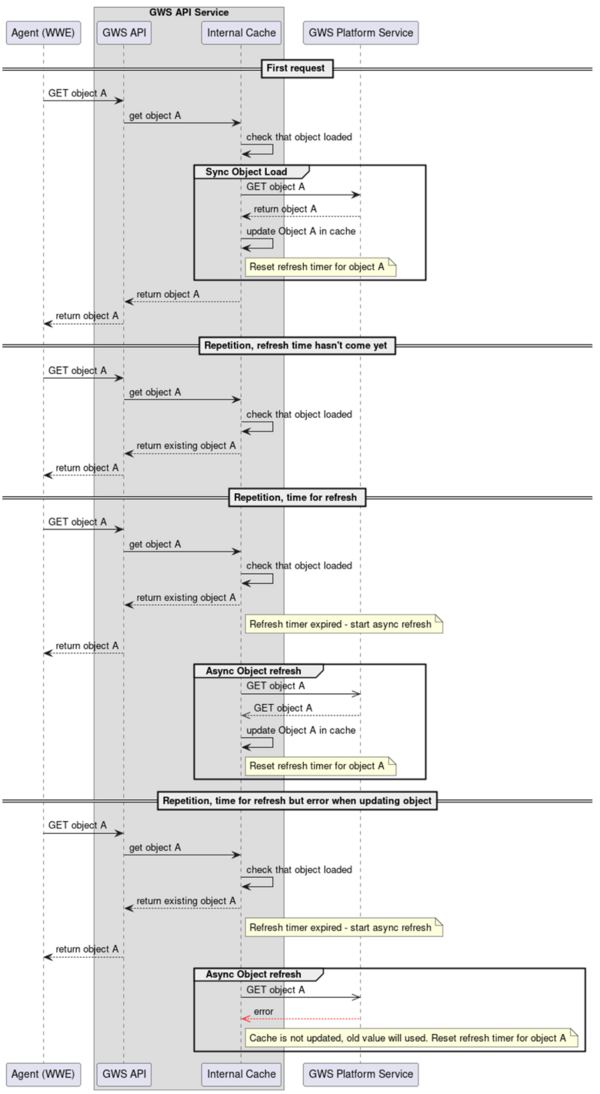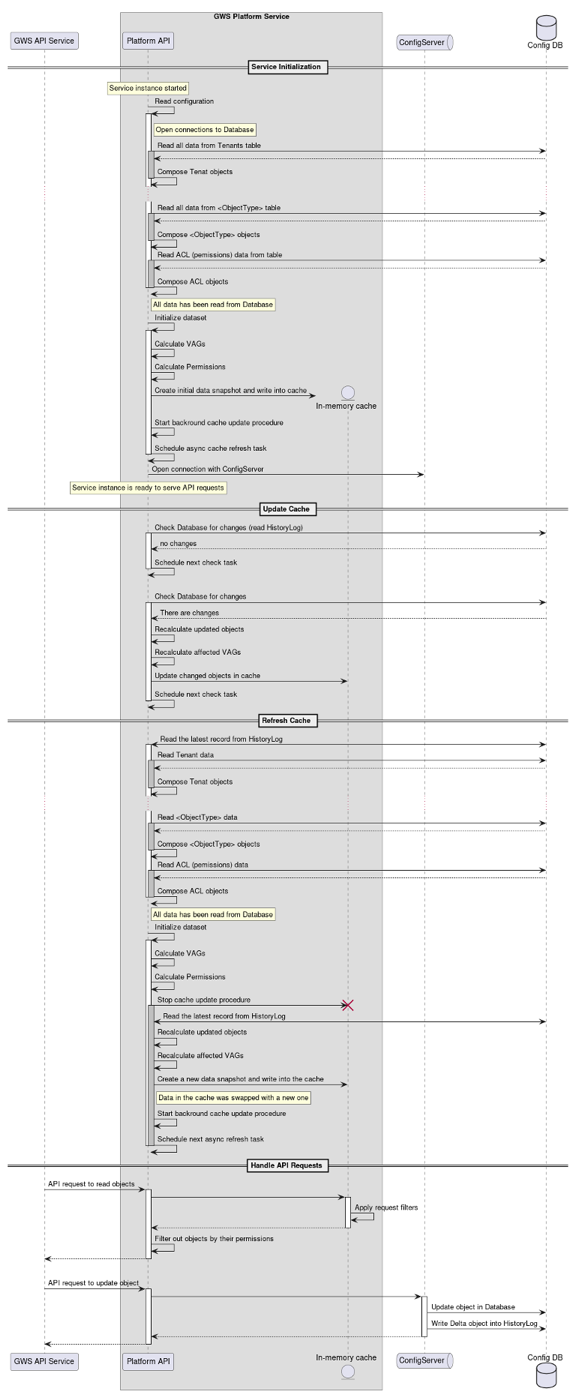Caching
In Genesys Web Services 8.6, caching is done in GWS API Service and GWS Platform Service, however, the caching mechanism is different for each service which is noted as follows:
- GWS API Service implements its own small local cache.
- GWS Platform Service caches specific object types from Configuration database and keeps them in its own memory cache.
GWS API Caching
GWS locally caches a small subset of configuration data. The maximum size of the cached subset of data is limited and by default it is set to 1000 objects of same type (users, DNs, places, and so on). Adding additional objects will depend on the Heap size. Each object will be refreshed after the refresh timeout has lapsed (default is 5 min) in the background. Meanwhile, the object stored in cache will be returned immediately without waiting for the refresh completion. Since the object refresh is triggered by read requests, the stale objects will not be refreshed until accessed, which can significantly reduce the load on Configuration Database and Platform API.
For each object type, the refresh rate can be configured using the corresponding option in the cachingSettings section of the application.yaml file, for example, placeTtl, usersTtl, and so on. For full list of caching options, see Caching Settings.
GWS API Caching Sequence diagram
GWS Platform API Caching
GWS Platform Service serves 'read API requests' using an internal in-memory cache or through Configuration Server. Note that not all object types are supported for caching. For the list of supported datatypes for which data is read directly from Configuration Server database, refer here.
Unsupported types and write operations (create/update/delete) are still handled through Configuration Server. All reads from database are done in subsequent manner through a single database connection by background processes. The background processes that support these requests are:
- A process for periodical full cache reevaluation that runs every 15 minutes (can be configured).
- A process for ongoing cache update procedure that runs every second picking up all changes in the database since the previous run, hence keeping the cache up-to-date. GWS Platform Service will retain and use existing cached information for the entire duration of any connectivity issues with the Configuration Database.
Supported object types for handling via in-memory cache are:
- CFGAccessGroup
- CFGActionCode
- CFGAgentGroup
- CFGAgentLogin
- CFGApplication
- CFGCallingList
- CFGCampaign
- CFGCampaignGroup
- CFGDN
- CFGDNGroup
- CFGEnumerator
- CFGEnumeratorValue
- CFGField
- CFGFilter
- CFGFolder
- CFGFormat
- CFGHost
- CFGPerson
- CFGPlace
- CFGPlaceGroup
- CFGRole
- CFGScript
- CFGService
- CFGSkill
- CFGSwitch
- CFGTableAccess
- CFGTenant
- CFGTransaction
- CFGTreatment
GWS Platform Caching Sequence diagram
Frequently Asked Questions
GWS API Caching
Do I have control over the cache refresh timer?
Yes, you do have control over refresh timeouts, you can configure them using Caching Settings.
Will I know how old the data is in the response? If the refresh fails, will I be notified in the next request that the data is outdated?
No, we don't provide any info on how old the data is since it might be composed from multiple data sources (caches) with different ages.
GWS Platform API Caching
What happens when a read API request is made and the configuration synchronization process fails more than once?
GWS Platform Service isn't ready until cache is populated once. After that, all read requests for supported data types are handled only via in-memory cache which is updated by background processes. If the update procedure fails then a full refresh is scheduled immediately (with delay in action). Also, cache is refreshed on a regular basis, every 15 mins.


